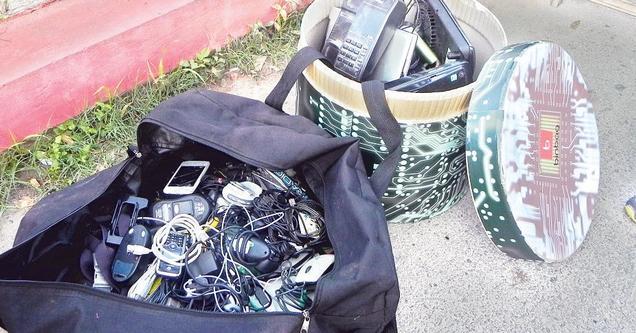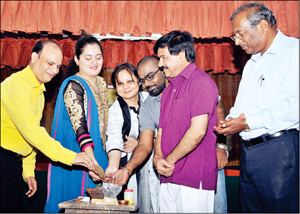
When this eight-year-old boy was brought to us by his parents, he didn’t speak or play. All he would do was play with his saliva, and roll on the ground. Over days and months, positive changes became visible in him. He started sitting down and playing with a variety of toys. What’s more, he now calls his parents ‘Appa’ and ‘Amma’ ,” Vaishali Pai says with pride.
The Founder and Director of ‘Tamahar’, a centre for children with special needs, points out that in spite of all the efforts, the challenges are many in this field, and the task an uphill one.
Children with special abilities and their parents still face stigma. Their only fault — these children are unable to live life the conventional way. More often than not, their special needs never get addressed. They continue to be ostracised. For those who are entrusted in teaching and caring for them, it’s a tough task, sometimes a thankless one.
An occupational therapist with two decades of experience, Vaishali came to Bengaluru for paediatric work more than 20 years ago. She used to travel to work for two hours or so. “I remember seeing parents travelling with children with special needs. There were only two or three centres then. This picture remained with me, After about 20 years, I started ‘Tamahar’,” she recollects.
“Children who come here are basically those with brain damage — with conditions like cerebral palsy, Down Syndrome, autism etc. We give a complete development assesment according to their mental age and intervention — cognitive, occupational, physical and speech therapies and try to make the brain function as a whole. We have also functional academics to make them independent and self-reliant. We are also doing pre-vocational programmes, parent training, both in theory and practicals of developmental therapy. The parents too are learning,” she says.
Chandrika Sheshadri started ‘Take a Break Respite Care’ in Malleswaram when she found that the City was not equipped to provide care for the child and parents. She says. “I have a child with special needs. Before relocating to Bengaluru, we were in the US. When we moved here seven years back, I thought we would get the same kind of caregiving that we got there on a regular basis. But we were disappointed. Soon, with the help of family and friends, we decided to open this place.” ‘Take a Break Respite Care’ gives a break to families that have individuals with special needs.”
Giving the primary caregiver a break is essential, she says. “We usually provide this care during weekends. Parents can drop the child here and they are here from three to six hours.”
The voices to bring these kids into the mainstream are getting louder. The sympathies can wait. “You can help the kids with something productive, rather than sympathy. I take my daughter wherever I go. Also, the parent has to take care of himself or herself first. Only then they can take care of the child. You need to let go of the child,” adds Chandrika.
The children with special needs are two to three percent of the population and Vaishali feels there should be a centre every five km. “I have a dream to get these children into art, music etc once a month. We also need volunteers for various activities like storytelling,” she points out.
Akila Vaidyanathan’s story is no different. She has a son with autism. Now, the founder-director of Amaze Charitable Trust, and joint secretary of Autism Society of India, says, “My son is now 19 years old. In 1999, when he was first diagnosed with it, I decided to train myself on how to work with him. Initially, we did speech therapy and vocational therapy. I was also looking at schools where we could enrol him, but the schools would say that they had no expertise to handle these children. So I did a diploma in social education and worked with the teachers on how to handle him,” she says.
Her son now loves to cook , trek and cycle. He uses alternate modes of communication including a VOCA. He is also a national-level bronze medalist for cycling (Special Olympics Bharat -2010).
On the larger picture, she says, “Very often, teachers are not equipped. Classrooms are crowded. Autistic children have sensory issues, they are sensitive to loud sounds and don’t like people touching them. These are the challenges, ” Akila adds,
“Having dedicated manpower is a challenge,” adds Vaishali. “To work in this section, you need to love children unconditionally. You have to create manpower and we do that too. There are two other challenges — finance and space. The children tend to make a lot of sound and there are certain points of the society where people can’t withstand the sound. So it’s difficult to find space.”
“If each one of us can give half our time for an organisation such as this, it would be such a support,” she says.
Four to five children from Tamahar goto Prakash Padukone Badminton Academy, Canara Union regularly to play badminton. They have cognitive losses — of which one is autistic and the other has a psychiatric disorder,” informs Vaishali. Yet they are all out there, smashing it on a regular wooden court! They are no way hanging up their racquets.
source: http://www.deccanherald.com / Deccan Herald / Home> Supplements> Metrolife / by Anupama Ramakrishnan, Bengaluru / DHNS – October 09th, 2015






